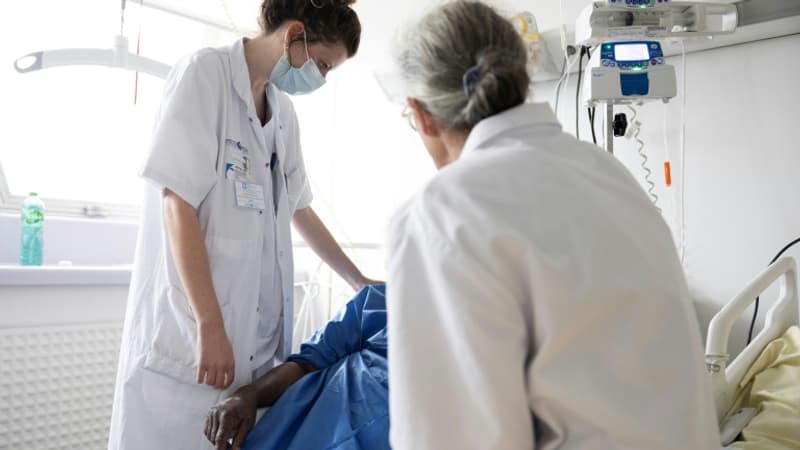This is the first time in France. According to the data of the Directorate of Research, Studies, Evaluation and Statistics (DREES), Posted on Monday July 28Doctors are now more numerous than their male colleagues. As of January 1, 2025, of the 237,214 doctors in activity, including 100,000 generalists, there were 118,957 women and 118,257 men. Last year, there were 117,781 male doctors and 115,635 medical women.
Women’s doctors are overrepresented in certain professions, with, for example, 97% of midwives. Pedicure-Podology remains essentially a female profession, and “continues to rejuvenate and feminize” among dental surgeons, even according to drees.
Change to World War I
How to explain this feminization of trades? First it is necessary to return 155 years. In 1870, Elizabeth Garrett, a British, who came to study in France, graduated as a doctor at the University of Paris. Five years later, Madeleine Brès became the first French doctor in medicine, after having obtained a very good mention for her thesis on breast milk and breastfeeding.
“Until 1875, only three facs made it possible to have a diploma to practice medicine: Strasbourg, Montpellier and Paris,” reminds BFMTV.com Natalie Pigeard-Micault, historian and deputy director of the Curie Museum.
Very gradually, medical schools are beginning to welcome women, but mainly of foreign origin. “Feminization [de la profession, NDLR] He could really be done thanks to student immigration because French women had no secondary education, “explains Natalie Pigeard-Micault.
One of the balancing times is World War I. Thousands of nurses are sent in the front, and especially in the back, treat the injured.
“They will discover that they can be useful for society, free and independent. After the war, they do not want to return to their living room, but they went to study,” added the historian.
Women overrepresented in the “attention” trades
After World War II, the “democratization of higher education”, especially during the thirty glorious years, makes it possible to accelerate the feminization of the profession. Then a mixture was established, with “a apogee in the 1990-2000.” But since the 2010, “we have returned to a sexualization of the sectors,” analysis of Natalie Pigeard-Micault.
If women are now more numerous than men in the profession, they are overrepresented in “care” (“care” in French), such as midwives, who oppose the offices of “cure” (priest), for example, surgeons.
A majority that is also partly explained by historical factors. “The first medical women considered that medicine was an extension of the status of mother,” said Natalie Pigeard-Micault, until he refused to treat men. They specialized in childbirth, the diseases of women and those of children.
The excessive representation of women in “care” is also due to gender mechanics. “Unconsciously, we tell girls that he is valuing to take care of others,” added the historian.
Glass roof or progress?
Will the numbers of the drees be analyzed under a prism of social progress? In other words, has a glass roof broken? No, it responds to BFMTV.com Christelle Rabier, Ehes professor (École des Hautes etudes in social sciences). “The doctor’s profession has become disqualified with very difficult study conditions and bad remuneration,” he analyzes. “We minimize the work of women and their success. Even medical women who could serve as a model are invisible,” he laments.
An analysis that does not share Marie-Pascale Schuller, Pulmonologist in Monteron and author of Pioneers of attention and other pioneers in the history of women. “Women have always been in care offices,” said the professional, who began their medical studies in 1981.
At that time, he estimated the proportion of men and women in “60-40%” or “65-35%”. “The possibility of doing higher education has become more democratic, which gives them the possibility of making more valued care professions. They can choose between more practical or more practical intellectual care professions,” adds Marie-Pascale Schuller.
Recently, in his office, he opened in 2009 after a start of the career in the pharmaceutical industry, a man asked: “Where is the doctor?”
“In 16 years of cabinet, I had to happen twice, it is messy,” he says, “it happened to me much more than I was a student.”
For the pulmonologist, who sees “many more medical women” who 45 years ago, there is no doubt to devalue the profession. “There is also inertia in hospital races. We have to wait for retirements, that women take over,” he said.
Source: BFM TV


